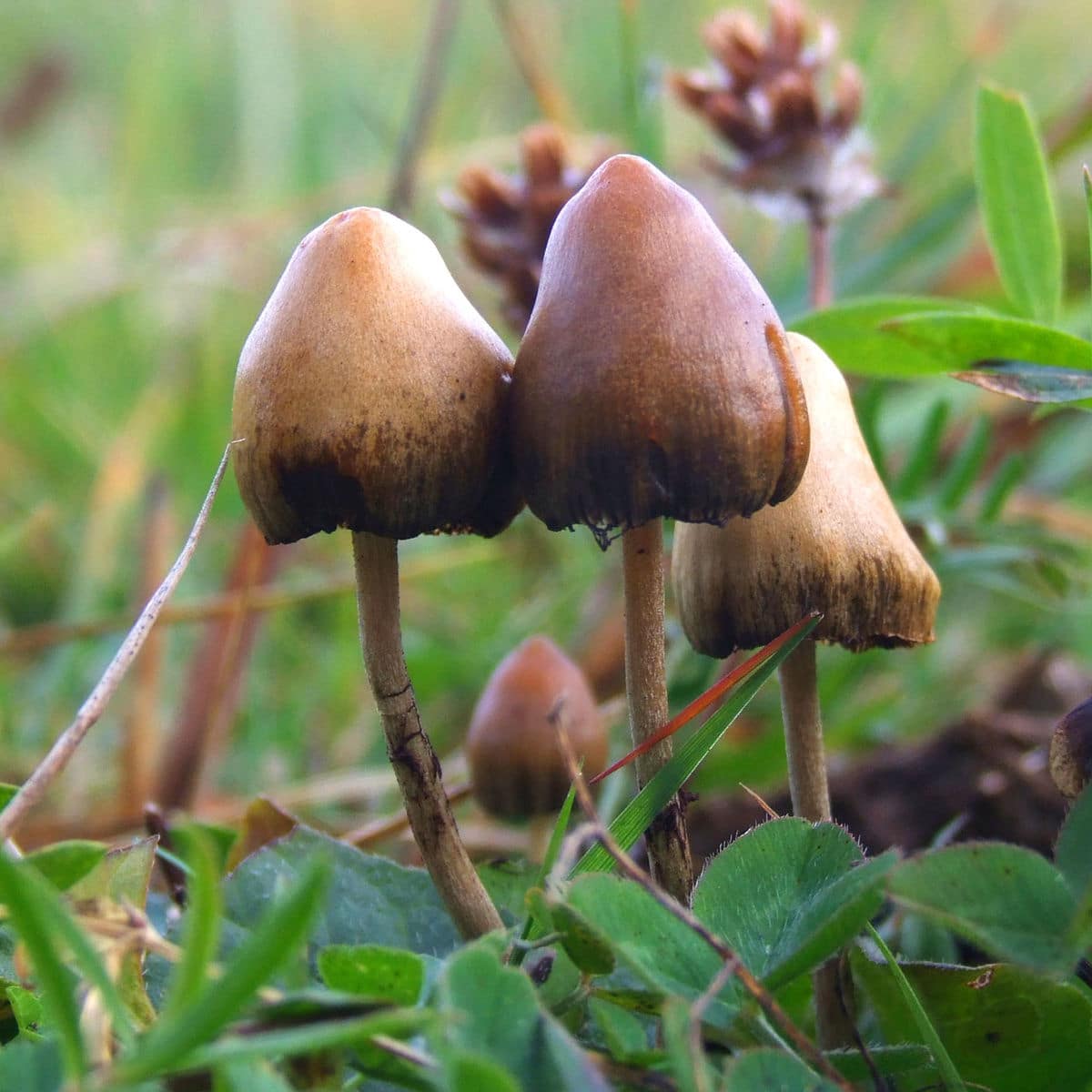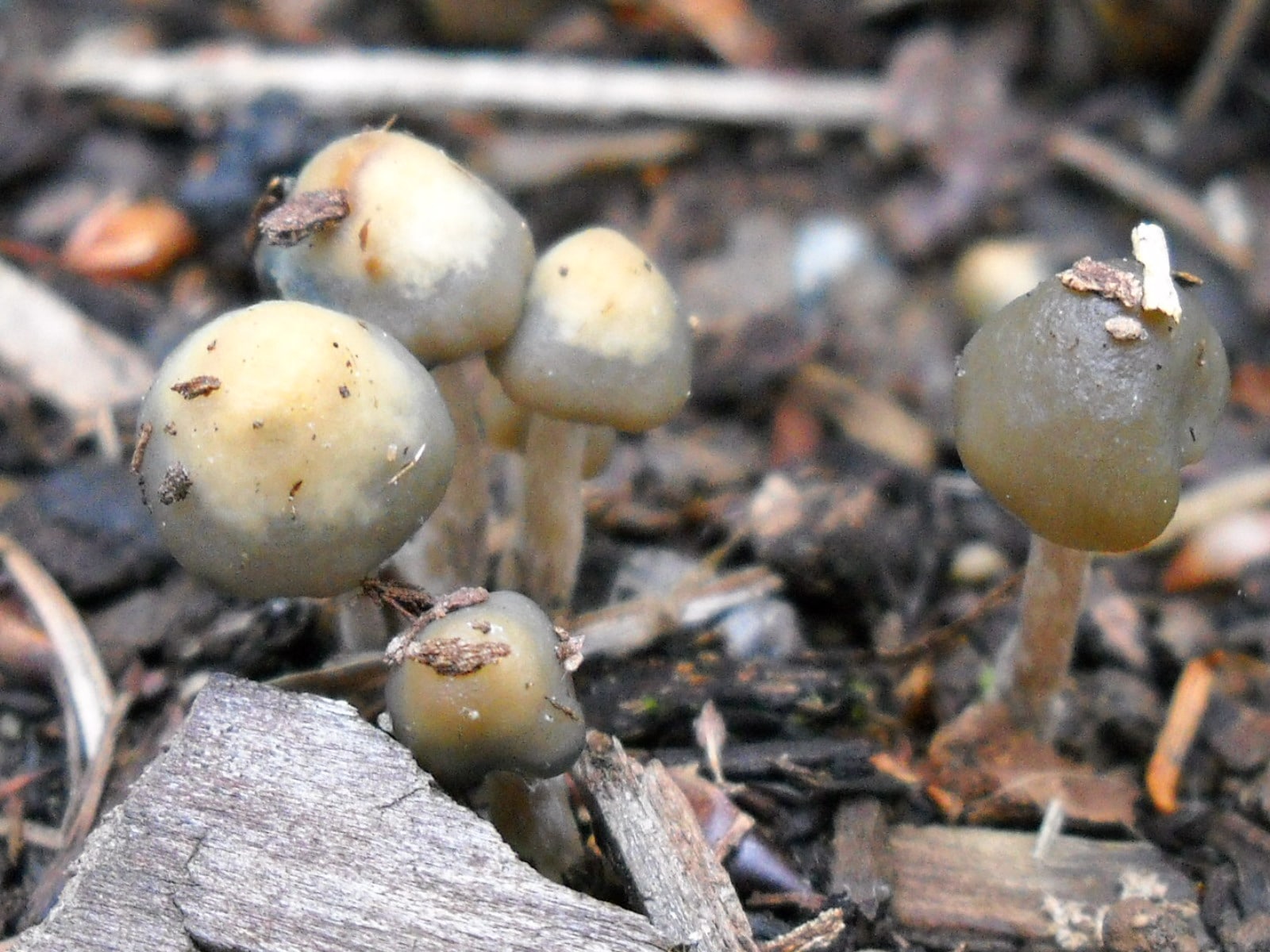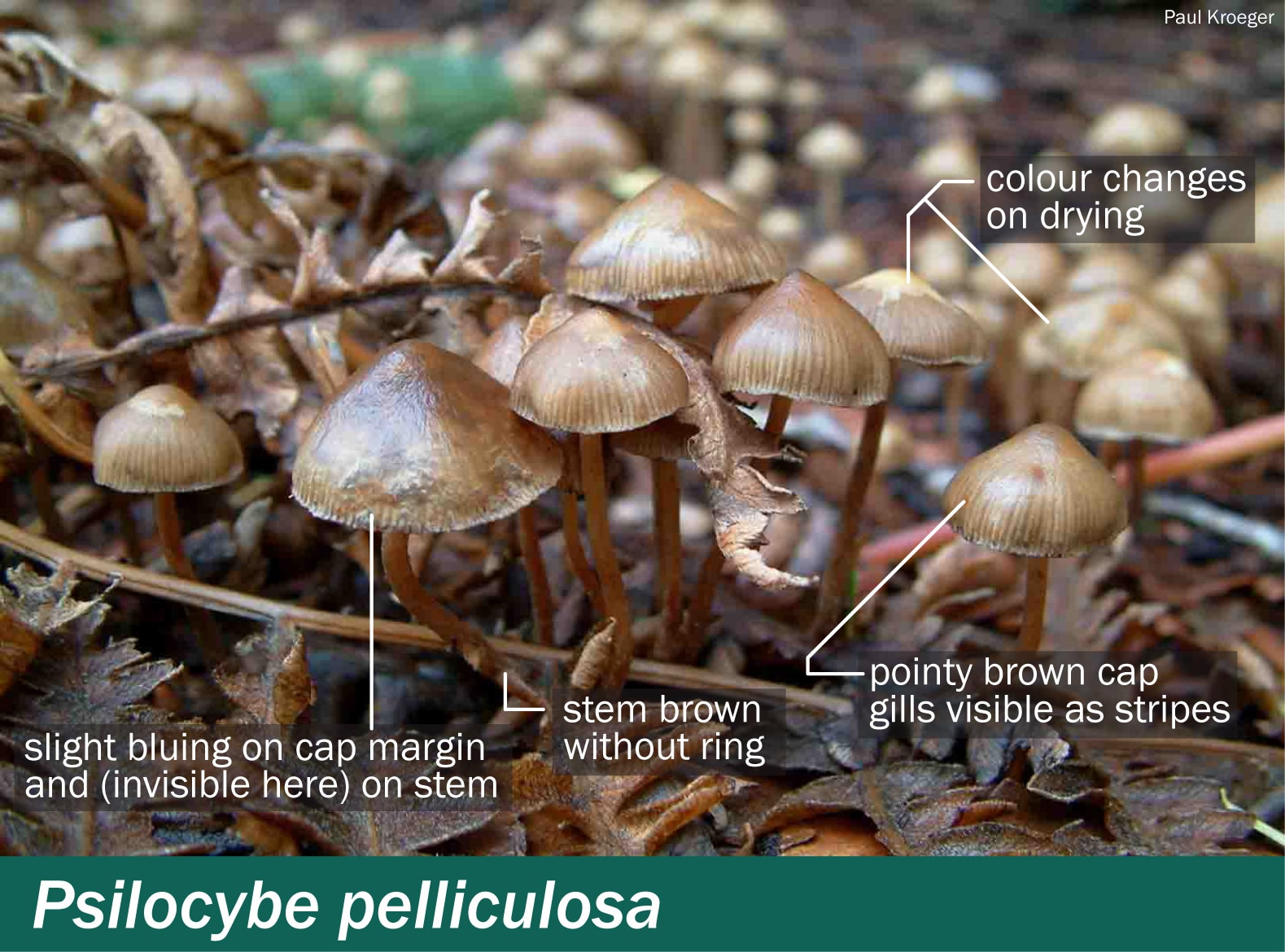There are many different types of magic mushrooms and that makes picking them in the wild very tricky. To make it worse, some mushrooms are highly toxic and their effects may range from mild stomach aches to organ failure and instant death.
Thus, if you want to go gathering mushrooms you better be very knowledgeable about them.
Identifying Mushroom Types
The most accurate method of identifying a mushroom is by creating the mushroom spores’ prints. To do this, you need to press the mushroom’s cap gill-side down against two sheets of paper, a white one and a dark one.
After that, you can do a comparison and use a mushroom guide to identify the different genus. Magic mushrooms, which are under the genus psilocybe, have an average size of about one inch on the cap and three-inch stalks.
This is quite small compared to other mushroom types. Fresh magic mushrooms typically have yellowish, light grayish, and brownish stalks and their gills are usually dark-colored. Their caps are usually brown and white or brownish.
Some of the most common varieties are featured below.
Psilocybe Cubensis
Being the most common and one of the larger sized magic mushrooms, it is popularly known as the Mexican mushroom or golden cap.
There are many different types and they typically have reddish-brown caps and yellowish or white stems. One feature that most mushroom hunters look for is the sticky bluish flesh that appears when the mushroom is bruised.
It should be noted that experienced mushroom hunters use that identifying feature together with others as many poisonous mushrooms also turn bluish when they bruise.
The mushroom is usually found growing on the dung of cattle and other grazing animals in humid and moist climates.
Psilocybe Semilanceata
Popularly known as a liberty cap, it is commonly found in humid climates where grazing animals are found. However, they do not grow directly on dung. It is smaller than the Mexican mushroom with a pointed cap.
It is brown or light yellow and is often confused with the psilocybe pelliculosa.
Psilocybe Baeocystis
Commonly known as either a bottle cap or a blue bell, the psilocybe baeocystis has a yellowish or brownish stalk and the cap is dark brown.
The mushroom is generally found in moist fields growing on felled rotting logs, mulch, or peat. It is potent as an hallucinogen and this has earned it the name of potent psilocybe.
Psilocybe Pelliculosa
Growing in clusters on moss and rotting plant matter, these mushrooms are mainly found in coniferous forests. They are usually on trails and paths rather than in grasslands.
They have conical-shaped brown caps which are slightly under an inch in diameter with a three-inch stem. The mushroom has whitish partial veil which doesn’t leave rings on the stalk.
Summary
There are many types of magic mushrooms and most of them are found on grassy moist areas populated by grazing animals. Most types grow on the dung of grazing animals though some do not grow directly on the dung.
They can be grown domestically in controlled environments in a matter of a few weeks.
Author Bio:
















